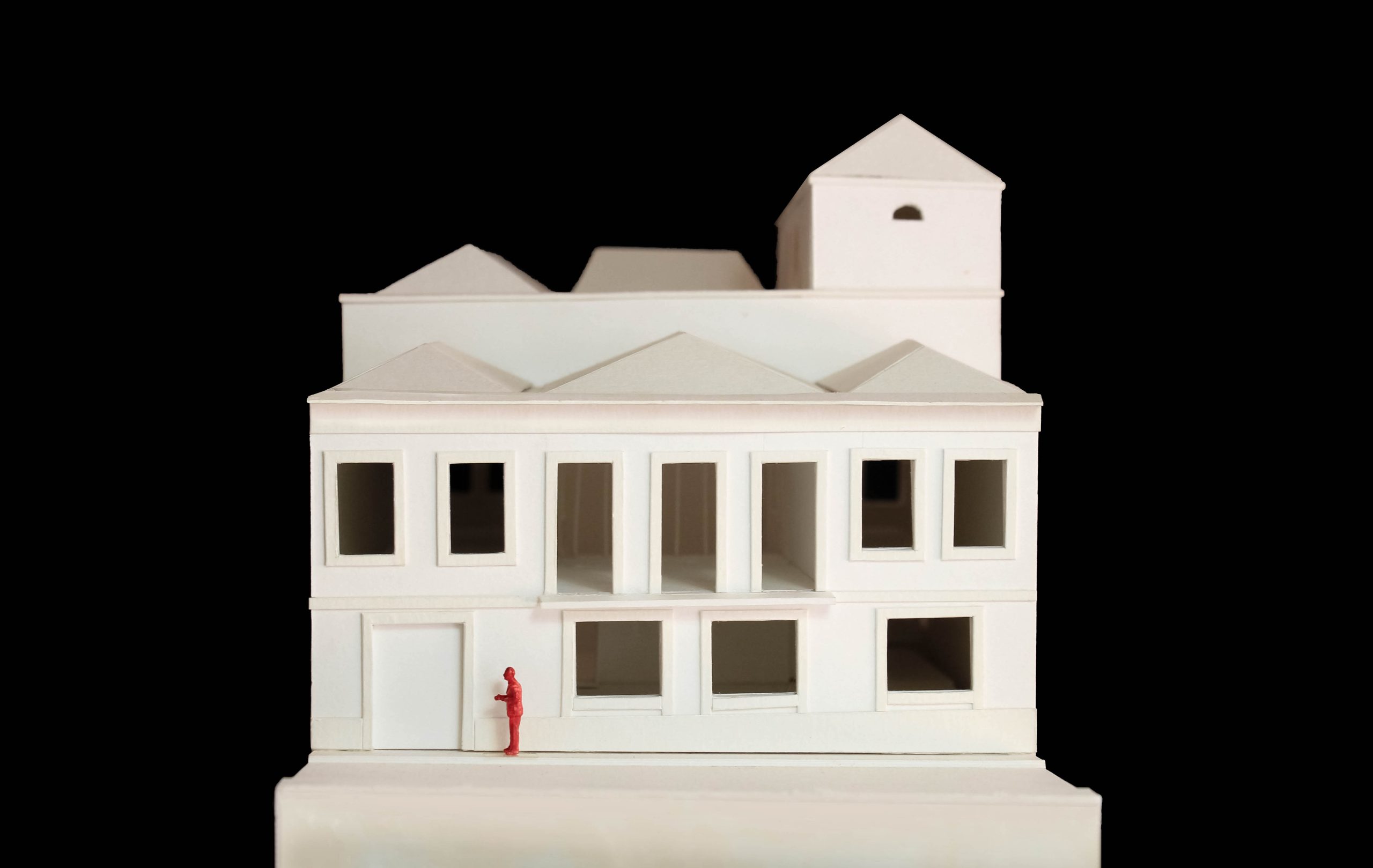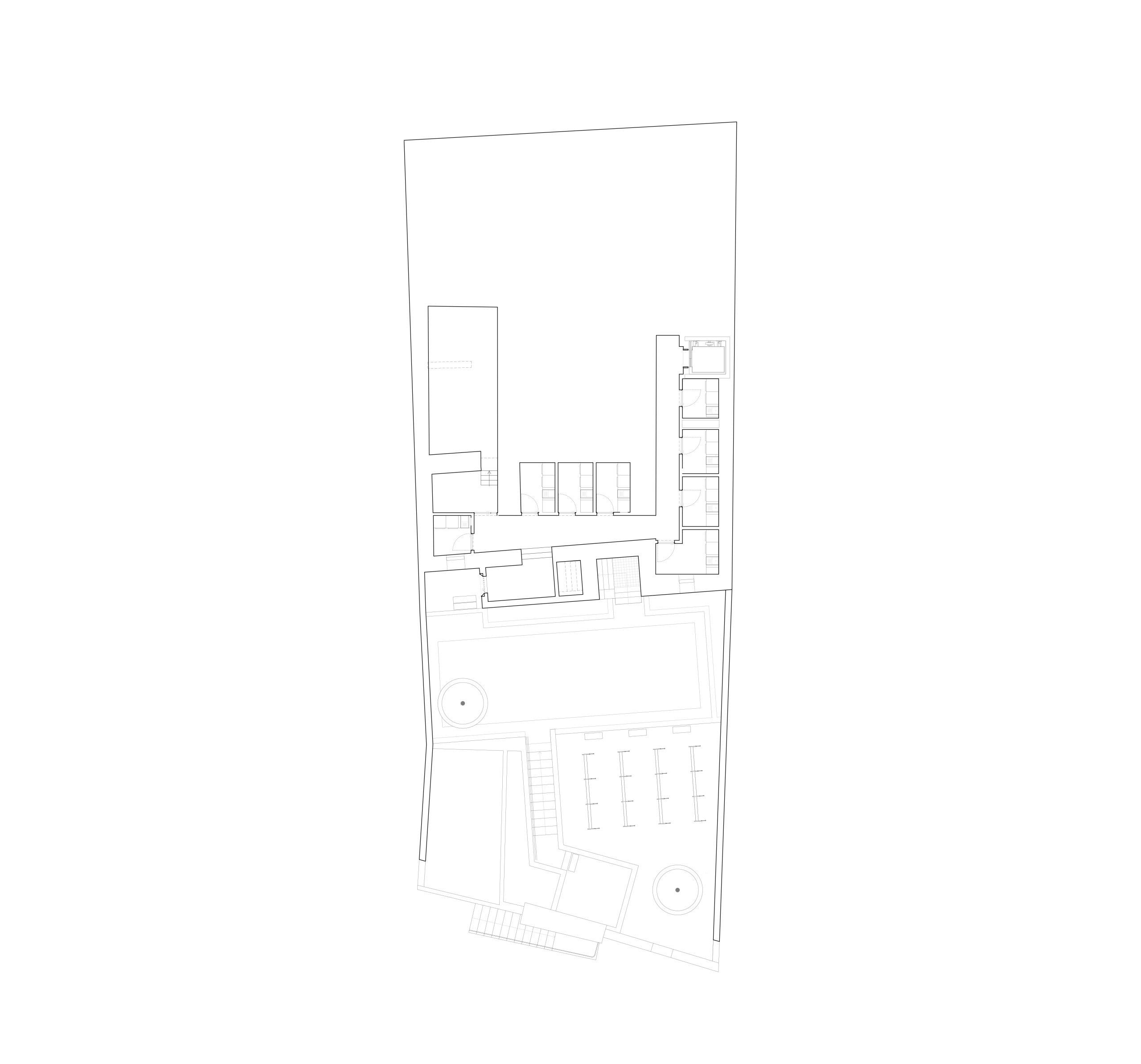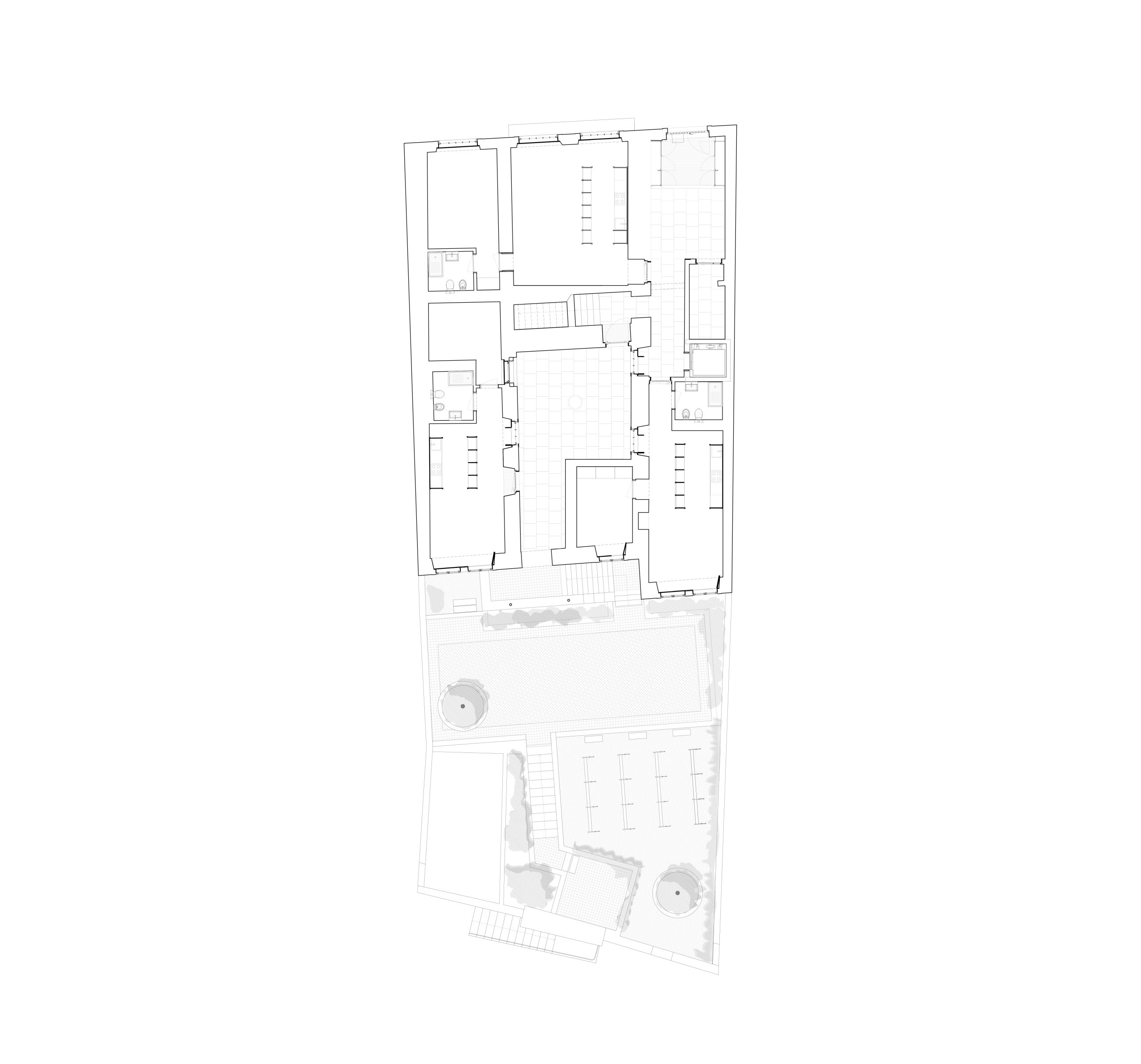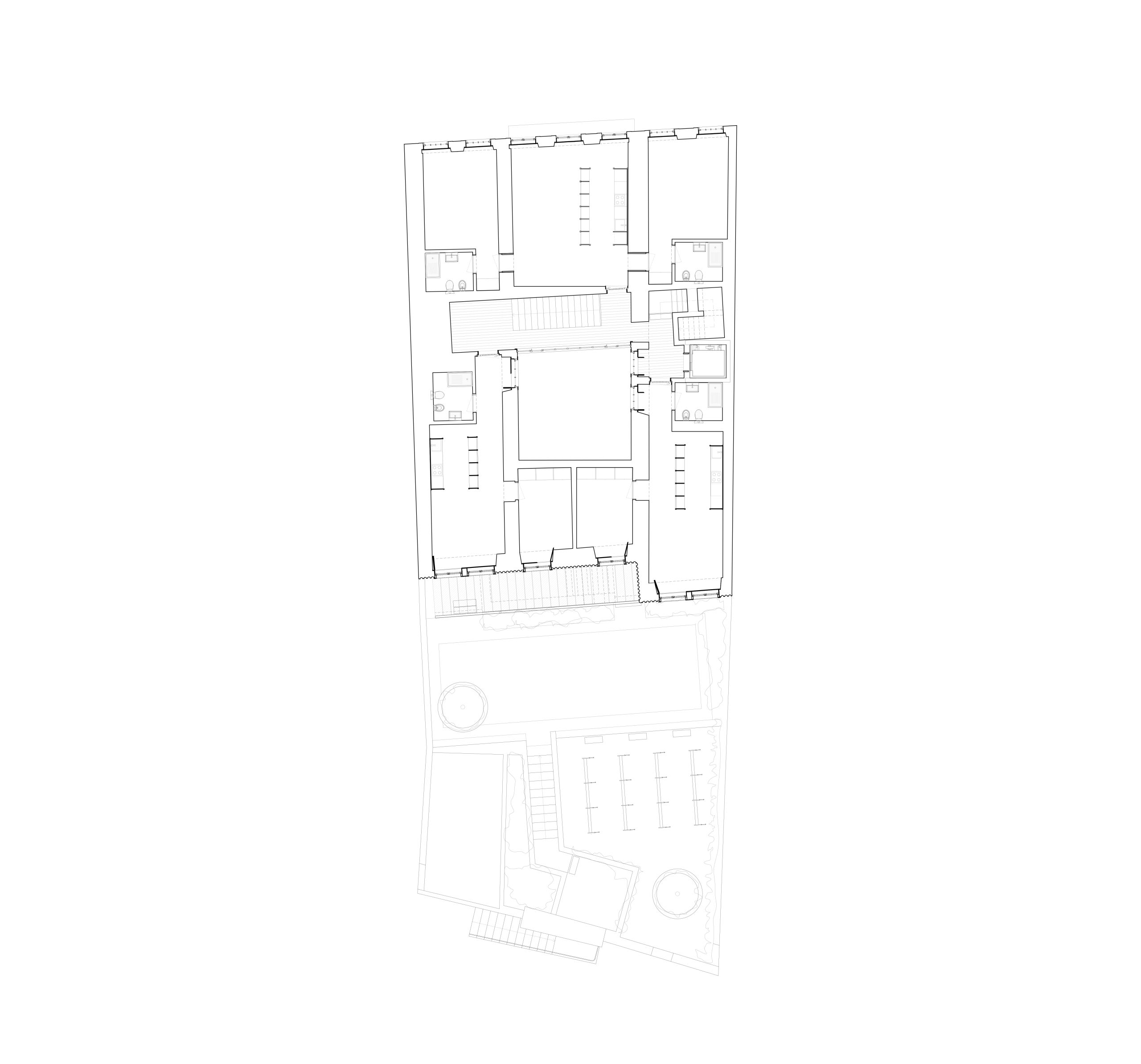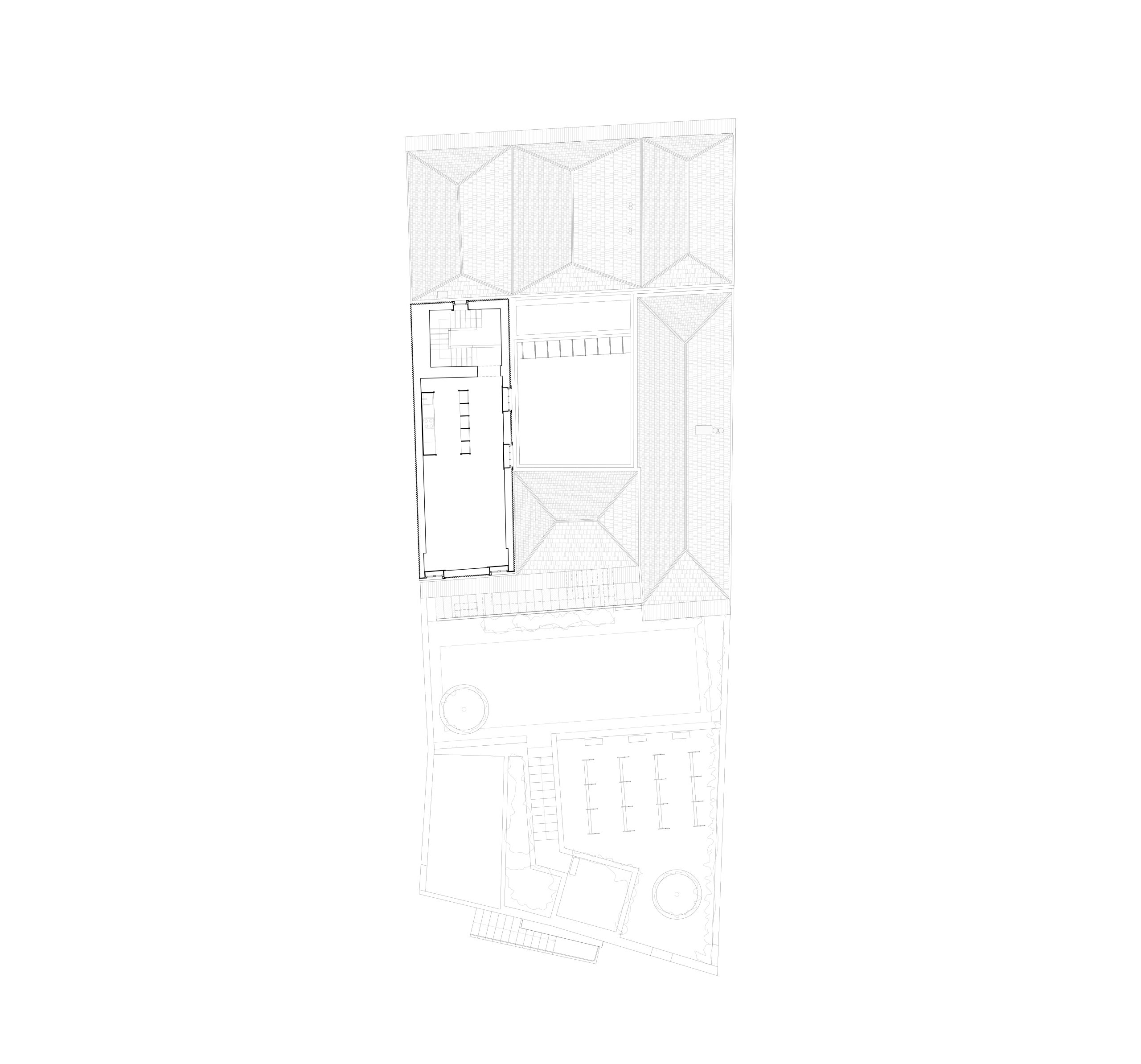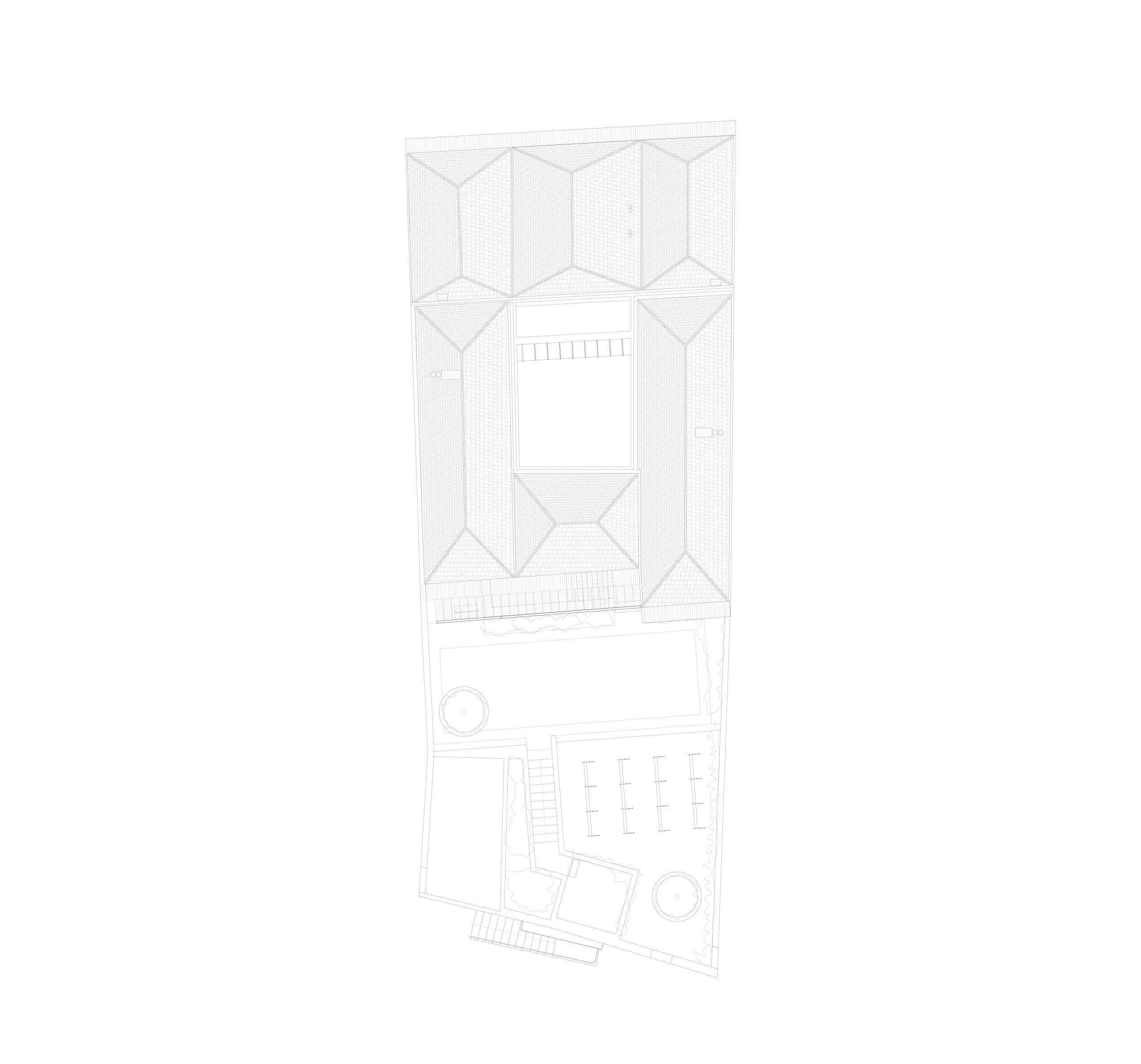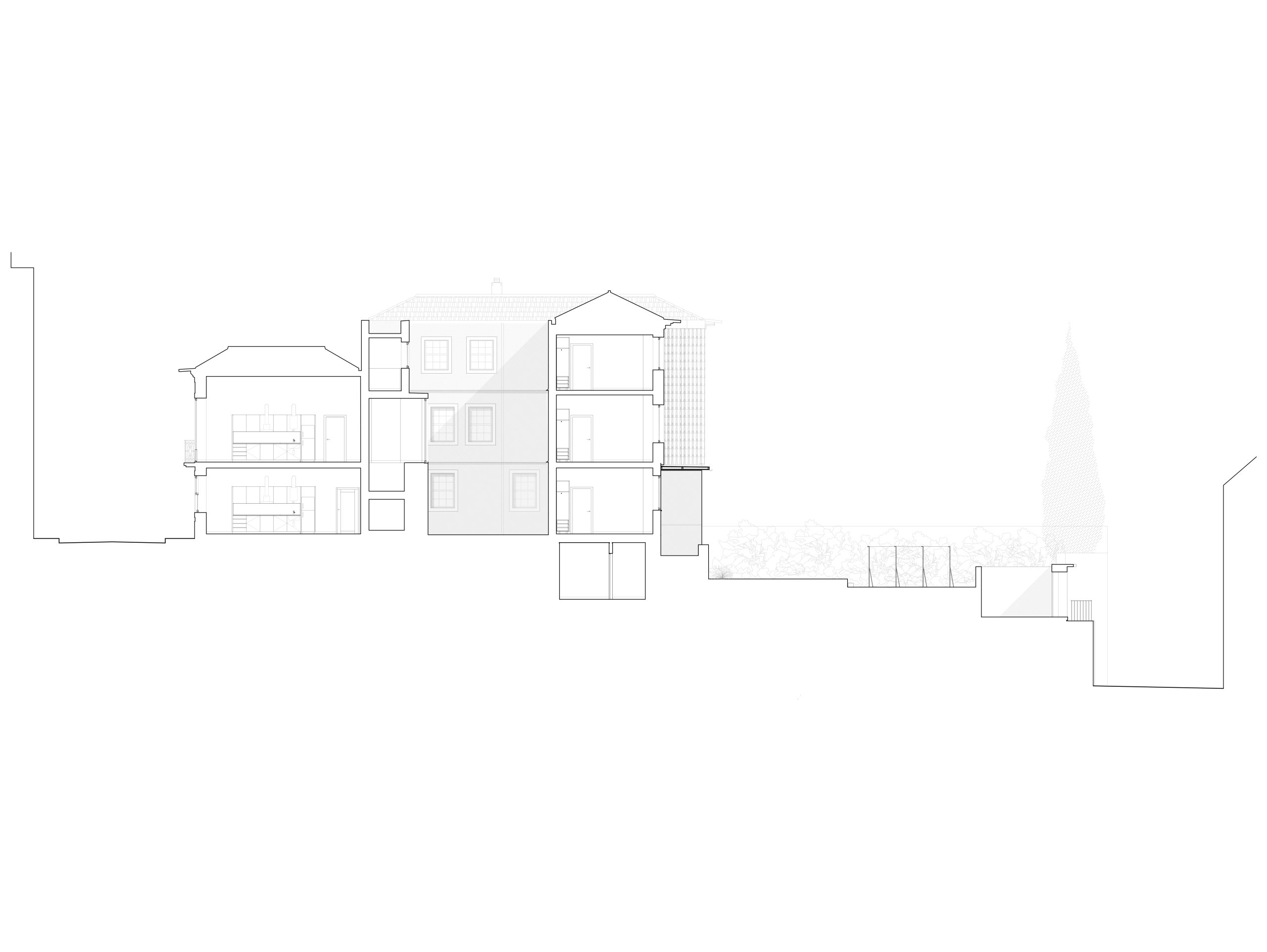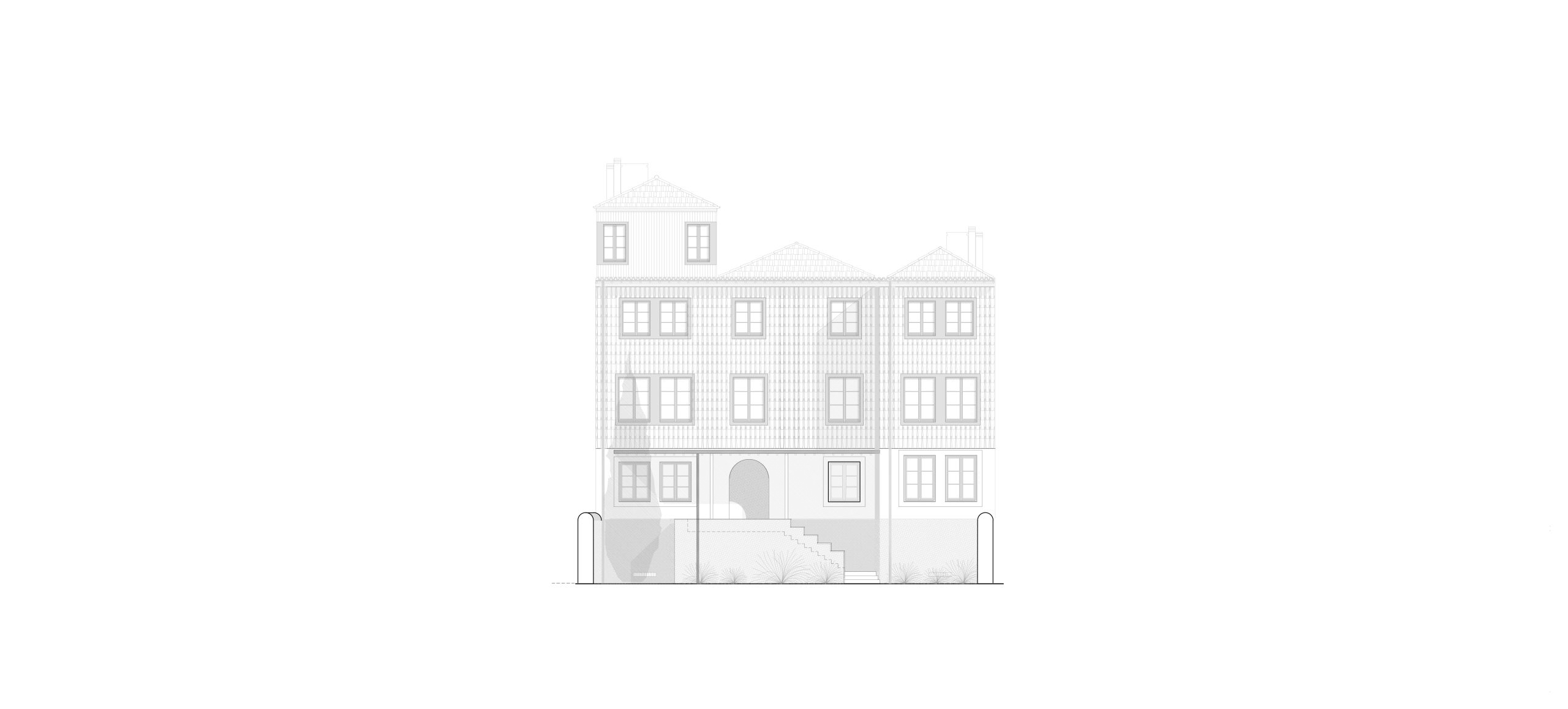|
São Miguel Street, where the building complex is located, corresponds to the main axis of the old Olival Jewish quarter. This was the last Jewish quarter in Porto and existed for 111 years within the Fernandina walls.
The existing complex consists of a built volume and a patio. Entrance is via Rua de São Miguel (to the north). The street faces Vitória Street to the south, through a drop in level contained by a support wall. Facing São Miguel Street, the volume integrates a main body that is characterized by a longitudinal elevation, contradicting the most common morphology of buildings in the historic center of Porto, as a rule defined by narrow facades. It is possible to conclude that over the years, the built areas were subject to over occupation and low-skilled additions.
The developed project presupposes an urban expansion operation. The structure will be maintained, as well as the morphology of the building, as it appears today. In general terms, the proposal is divided into two specific actions, one of which refers to the existing building complex and the other corresponding to an intervention in the area of the Vitória Street wall. In its entirety, the project foresees the construction of 8 homes, 6 of which are T0 and 2 are T1. The rehabilitation and adaptation of the building’s volume involves prior cleaning and demolition work, aiming to maintain the main structural elements, such as the main walls made of granite that develop in the depth of the intervention area. The architectural integrity of the main body facing São Miguel Street will be maintained, with slight adjustments. The side wings will also be preserved in their volume. On the rear elevation, the concrete and brick masonry additions will be demolished, and the openings will be rebuilt based on the existing monotony.
The project envisages the stabilization and consolidation of the existing building volume. The use of complete structural elements in reinforced concrete is part of this same derivative, with its use expected to be selective and restricted to the essential minimum. As much as possible, traditional technologies will be reintroduced, particularly in terms of masonry and stone coverings, cork-based plasters, wooden floors and frames and tile coverings and coverings. The construction options associated with the new morphological aspects (namely in terms of the building body facing south), contribute to the integration of the operation in the context of the matrix of the city of Porto, facing the Douro River.
|
Architecture Paulo Tormenta Pinto
Collaboration Rosa Maria Bastos, João Maria Costa, Bruna Moreira e Maria de Novais
Hydraulics Rita Duarte/ BETAR, Lda
Estruturas Miguel Villar e Paulo Mendonça/ BETAR, Lda
AVAC José Galvão Teles
Acoustics Paula Martins
Gas Augusto Neves Teixeira
Electricity and Telecommunications João Mira/ OHMSOR
Elevators Rui Batista
Project/ Construction 2019 / –
Photography Maria de Novais e Bernardo Vicente
|
